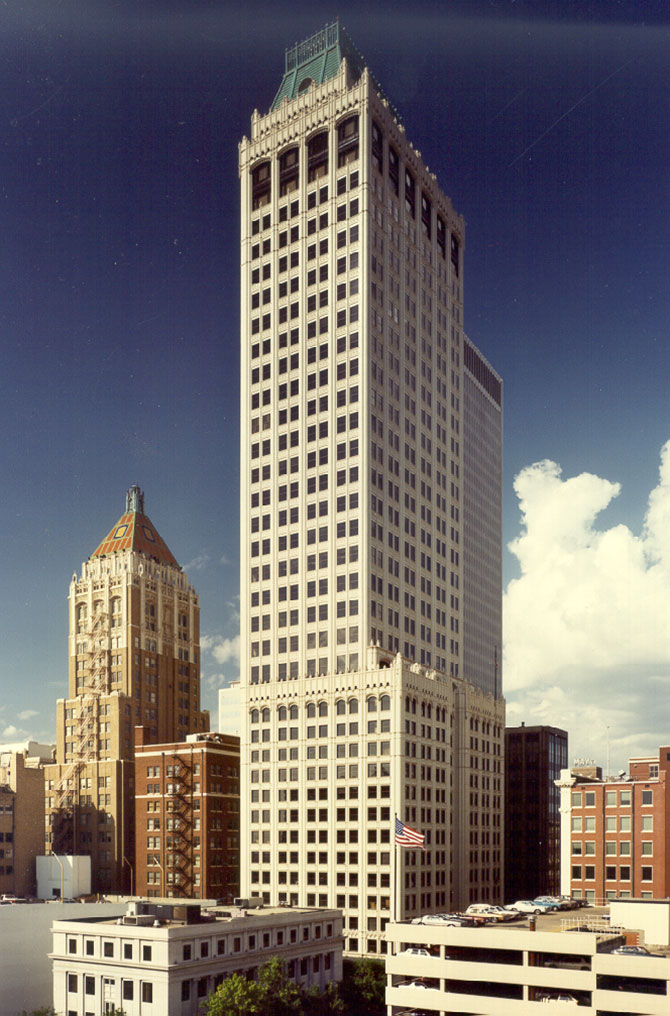I’ve been with Dewberry for 42 years. I’ve had an opportunity to design many types of buildings, but there is one project that will always stand out in my career. I see it on my way to and from work each day, and I can see it from our office here in Tulsa. It was the most challenging project of my career, and certainly one of the most rewarding.
The building is the Mid-Continent Tower, a 36-story downtown office building. Our office designed the tower in the early 1980s. At the time, this unique project won many awards—including a National Trust Preservation Honor Award. The Mid-Continent Tower has become a Tulsa landmark and was just awarded the 25 Year Award from the Eastern Oklahoma chapter of the American Institute of Architects.
It’s hard to say which aspect was the most challenging. We were building next to the existing 16-story Mid-Continent Building, constructed in 1918. Our client, Reading & Bates, owned that building and wanted to expand it for a headquarters, but the structural system wouldn’t accommodate additional floors. Instead, we built the new tower adjacent to the existing building to its full height, then used massive, two-story-high trusses to cantilever over the historic building, allowing for the construction of an additional 20 floors. The two buildings appear as one, yet they never touch. Engineering News-Record called it “building on the shoulders of the past.”
I remember visiting New York City for inspiration at our client’s request, and realizing that it was Cass Gilbert’s Woolworth Building that must have inspired Josh Cosden, the oil baron who built the original building. He must have admired the grace of that Tudor Gothic building, with its intricate spires, ornate copper roof, and glazed terra cotta façade. There were two trips to Carrara, Italy, to select the marble—just the right shade to match the early-20th century marble in the sister building. We also traveled to Quebec at the request of Reading & Bates President Charlie Thornton to see the Chateau Frontenac, and learn what we could about how to artificially age a copper roof to its green patina. It turned out that the Canadians often used cow urine. Instead, we used a nitrate solution and that seemed to do the trick.
There was one more very important trip, to a small town with the only supplier in the U.S. that could provide one of our most important building materials. I’ll save that story for next week, in part two of this trip down memory lane, along with my recollection of some of the team members who helped bring the Mid-Continent Tower to the Tulsa skyline.
